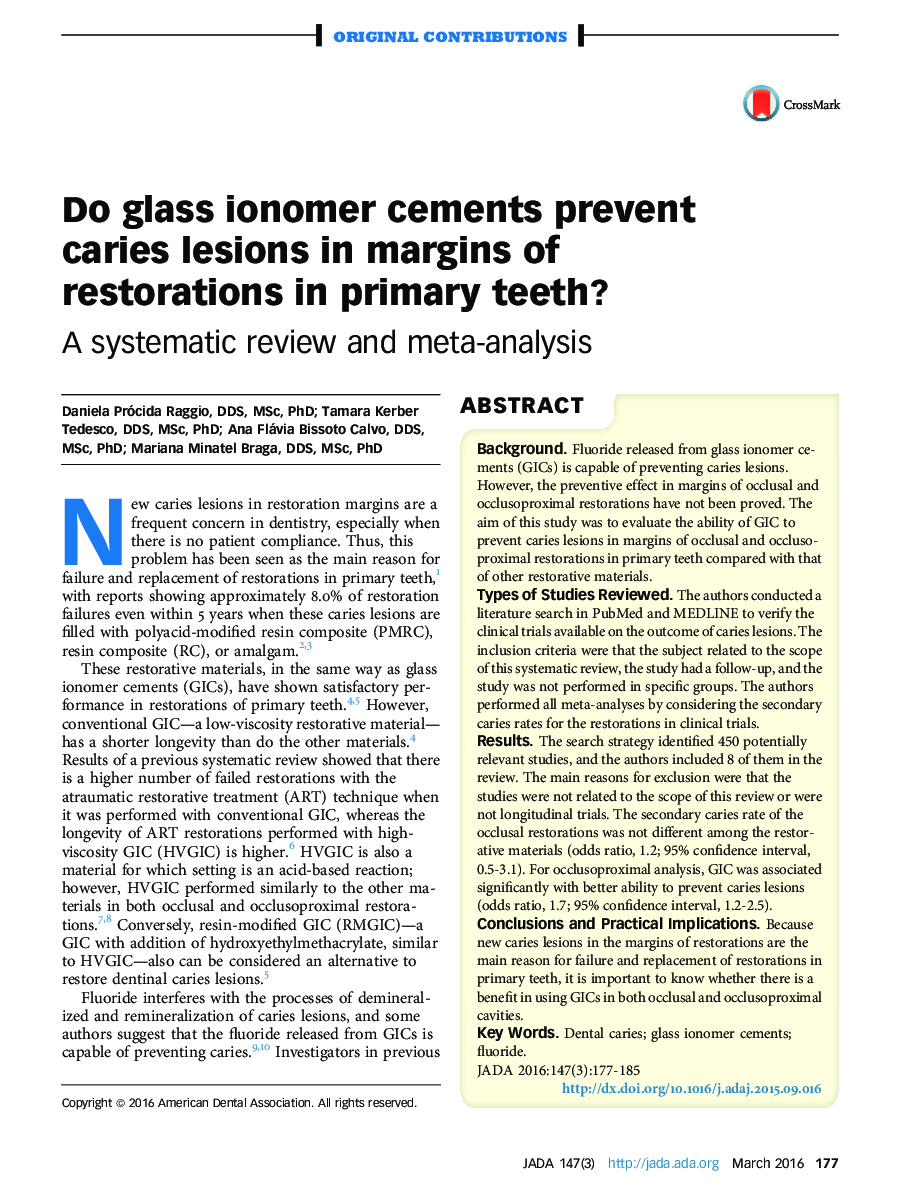| Article ID | Journal | Published Year | Pages | File Type |
|---|---|---|---|---|
| 3136380 | The Journal of the American Dental Association | 2016 | 9 Pages |
BackgroundFluoride released from glass ionomer cements (GICs) is capable of preventing caries lesions. However, the preventive effect in margins of occlusal and occlusoproximal restorations have not been proved. The aim of this study was to evaluate the ability of GIC to prevent caries lesions in margins of occlusal and occlusoproximal restorations in primary teeth compared with that of other restorative materials.Types of Studies ReviewedThe authors conducted a literature search in PubMed and MEDLINE to verify the clinical trials available on the outcome of caries lesions. The inclusion criteria were that the subject related to the scope of this systematic review, the study had a follow-up, and the study was not performed in specific groups. The authors performed all meta-analyses by considering the secondary caries rates for the restorations in clinical trials.ResultsThe search strategy identified 450 potentially relevant studies, and the authors included 8 of them in the review. The main reasons for exclusion were that the studies were not related to the scope of this review or were not longitudinal trials. The secondary caries rate of the occlusal restorations was not different among the restorative materials (odds ratio, 1.2; 95% confidence interval, 0.5-3.1). For occlusoproximal analysis, GIC was associated significantly with better ability to prevent caries lesions (odds ratio, 1.7; 95% confidence interval, 1.2-2.5).Conclusions and Practical ImplicationsBecause new caries lesions in the margins of restorations are the main reason for failure and replacement of restorations in primary teeth, it is important to know whether there is a benefit in using GICs in both occlusal and occlusoproximal cavities.
